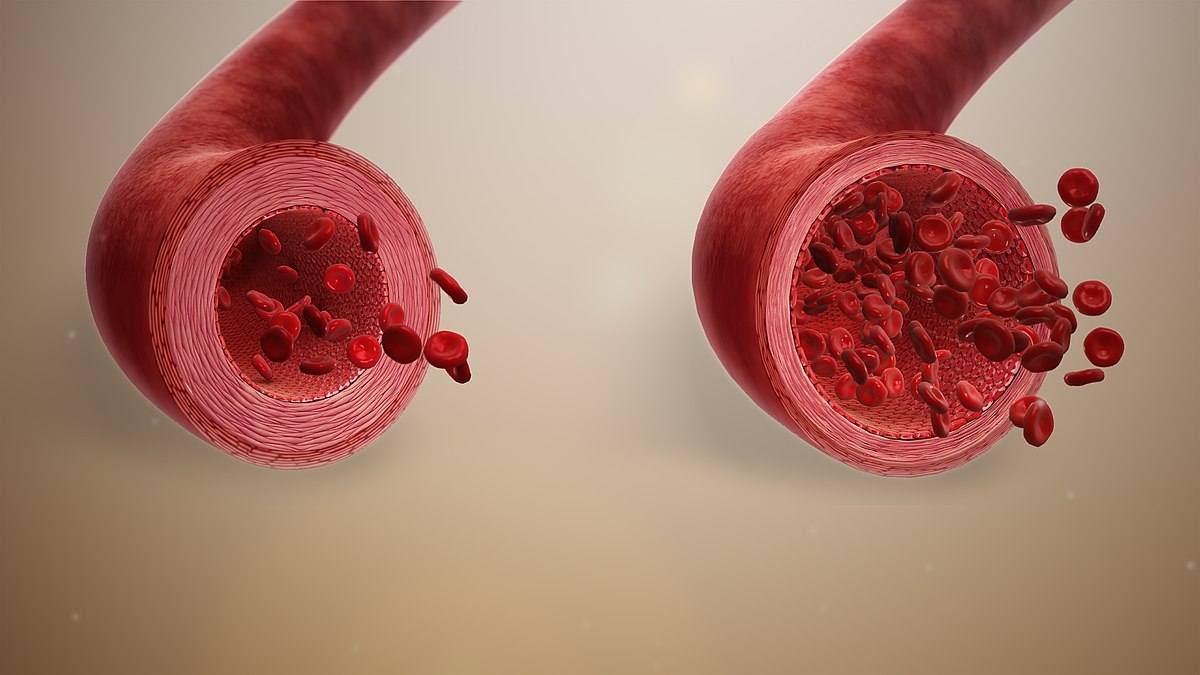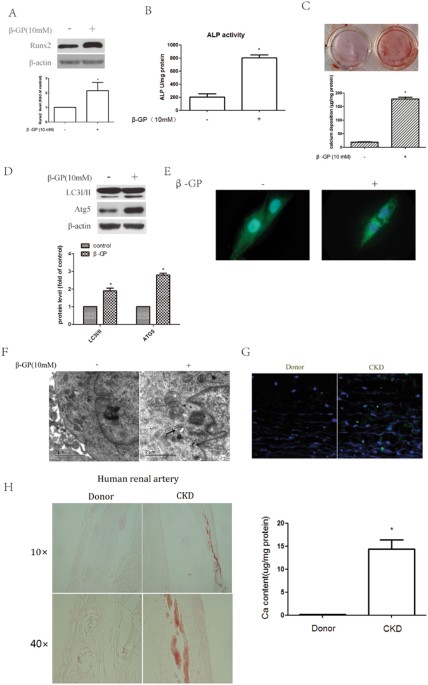- Reaction score
- 194
- Home
- Forums
- Men's Hair Loss Discussions
- New Research, Studies, and Technologies
- Hair Loss and Alopecia Published Studies
You are using an out of date browser. It may not display this or other websites correctly.
You should upgrade or use an alternative browser.
You should upgrade or use an alternative browser.
Mechanism Of Androgenic Alopecia: Addressing Speculations Through Empirical Evidences
- Thread starter Squeegee 2.0
- Start date
- Reaction score
- 975
https://sci-hub.tw/10.1111/dth.13120
Althought authors and reviewers have some problem with the word finasteride (Finestride, Finesteride), they point to chronic inflammation and hormonal imbalance as the main factor of hair loss. Then appears calcification, fibrosis and problems with blood flow
In conclusions
" we came to the conclusion that imbalance in diet, life style, microbiome and scalp environment which lead to chronic inflammation and imbalanced T:E ratio results in increased level of scalp DHT, AR and
imbalanced calcification regulators"
But common baldness have a special pattern that diet and life style don`t explain
Raymond Saboreaud detected differences regarding microbiome more than 100 years ago
Althought authors and reviewers have some problem with the word finasteride (Finestride, Finesteride), they point to chronic inflammation and hormonal imbalance as the main factor of hair loss. Then appears calcification, fibrosis and problems with blood flow
In conclusions
" we came to the conclusion that imbalance in diet, life style, microbiome and scalp environment which lead to chronic inflammation and imbalanced T:E ratio results in increased level of scalp DHT, AR and
imbalanced calcification regulators"
But common baldness have a special pattern that diet and life style don`t explain
Raymond Saboreaud detected differences regarding microbiome more than 100 years ago
Attachments
Last edited:
- Reaction score
- 1,325
One statement I don't understand:
Increase in estrogens level causes balding in men.
Does that simply mean higher E with male level T since HRT for mtf shows hair regrowth with E. Or it's a mistake and should be T instead of E in that sentence?
Increase in estrogens level causes balding in men.
Does that simply mean higher E with male level T since HRT for mtf shows hair regrowth with E. Or it's a mistake and should be T instead of E in that sentence?
Last edited:
- Reaction score
- 194
Few studies show the AR signalling is responsible for the calcification..
These novel data demonstrate that androgens play a role in inducing vascular calcification through the AR. Androgen signalling may represent a novel potential therapeutic target for clinical intervention.
https://www.ncbi.nlm.nih.gov/pmc/articles/PMC4837411/
This study demonstrates for the first time that calcification of advanced atherosclerotic lesions is an androgen - sensitive process and postulates potential roles for both AR- and ER-mediated pathways in androgen-induced vascular calcification.
https://researchers.mq.edu.au/en/pu...gression-of-arterial-calcification-in-apolipo
These novel data demonstrate that androgens play a role in inducing vascular calcification through the AR. Androgen signalling may represent a novel potential therapeutic target for clinical intervention.
https://www.ncbi.nlm.nih.gov/pmc/articles/PMC4837411/
This study demonstrates for the first time that calcification of advanced atherosclerotic lesions is an androgen - sensitive process and postulates potential roles for both AR- and ER-mediated pathways in androgen-induced vascular calcification.
https://researchers.mq.edu.au/en/pu...gression-of-arterial-calcification-in-apolipo
Last edited:
- Reaction score
- 194
Ginsenoside Rb1 ( a major component of ginseng) inhibits vascular calcification as a selective androgen receptor modulator.
https://www.sciencedirect.com/science/article/abs/pii/S0014299919304984
Red Ginseng Extract Promotes the Hair Growth in Cultured Human Hair Follicles
In conclusion, RGE and its ginsenosides may enhance hDPC proliferation, activate ERK and AKT signaling pathways in hDPCs, upregulate hair matrix keratinocyte proliferation, and inhibit the DHT-induced androgen receptor transcription. These results suggest that red ginseng may promote hair growth in humans.
https://www.ncbi.nlm.nih.gov/pmc/articles/PMC4350143/
https://www.sciencedirect.com/science/article/abs/pii/S0014299919304984
Red Ginseng Extract Promotes the Hair Growth in Cultured Human Hair Follicles
In conclusion, RGE and its ginsenosides may enhance hDPC proliferation, activate ERK and AKT signaling pathways in hDPCs, upregulate hair matrix keratinocyte proliferation, and inhibit the DHT-induced androgen receptor transcription. These results suggest that red ginseng may promote hair growth in humans.
https://www.ncbi.nlm.nih.gov/pmc/articles/PMC4350143/
- Reaction score
- 1,325
Another weak Finasteride competitor.
- Reaction score
- 194
Hair-Growth Potential of Ginseng and Its Major Metabolites: A Review on Its Molecular Mechanisms..
https://www.ncbi.nlm.nih.gov/pmc/articles/PMC6163201/
https://www.ncbi.nlm.nih.gov/pmc/articles/PMC6163201/
- Reaction score
- 194
Another weak Finasteride competitor.
They both work differently.. finasteride is a 5AR inhibitor (DHT is the product of testosterone and does not require the activity of 5α-reductase to affect hair follicles).
Ginsenosides: affect hair growth through the regulation of androgen receptor signaling. We proved this speculation by showing that RGE and its ginsenosides inhibit the DHT-induced upregulation of androgen receptor in hDPCs...
- Reaction score
- 1,325
@John Difool - It's the oral alcohol version, but, I'm using it topically. I'm using 600mg active compounds KRGe diluted in approximately 35ml of solution (all the other ingredients listed in my earlier post). Using about 12ml of this mixed solution each day. So, that would come out to approximately 200mg of KRGe topically per day.
- Reaction score
- 1,325
Where do you buy that stuff?
- Reaction score
- 194
https://www.badmonkeybotanicals.com/organic-panax-ginseng-berry-70-ginsenosides?search=ginseng
The important part is the amount of Ginsenoside .
The important part is the amount of Ginsenoside .
- Reaction score
- 340
If I'm reading this right, this is not an essential oil, is that right?
Are there any safety concerns with this thing? One Chinese herb we discussed here turned out to be toxic for the liver.
In these
https://pubmed.ncbi.nlm.nih.gov/24613976/
https://pubmed.ncbi.nlm.nih.gov/28885585/
they mention the involvement of the Wnt signaling pathway, which I don't know much about, but I've heard is involved in cancer. Is that something to worry about?
Can you put that into slightly plainer English, what does regulation of androgen receptor signaling mean exactly? I assume it's not the typical thing of preventing things from binding.
UPDATE: Well, it seems that it doesn't stop DHT from binding, it just doesn't have the effect it normally does when it binds. The question is does this also have other systemic-level effects.
It actually does have a 5ar inhibiting effect, but it promotes hairloss through a different mechanism, as well.
https://www.ncbi.nlm.nih.gov/pmc/articles/PMC4350143/
"Recently, Murata et al. reported that red ginseng and ginsenoside-Rg3 inhibit 5α-reductase and that the topical application of RGE inhibits hair regrowth suppression in testosterone-treated mice.10"
Are there any safety concerns with this thing? One Chinese herb we discussed here turned out to be toxic for the liver.
In these
https://pubmed.ncbi.nlm.nih.gov/24613976/
https://pubmed.ncbi.nlm.nih.gov/28885585/
they mention the involvement of the Wnt signaling pathway, which I don't know much about, but I've heard is involved in cancer. Is that something to worry about?
Ginsenosides: affect hair growth through the regulation of androgen receptor signaling. We proved this speculation by showing that RGE and its ginsenosides inhibit the DHT-induced upregulation of androgen receptor in hDPCs...
Can you put that into slightly plainer English, what does regulation of androgen receptor signaling mean exactly? I assume it's not the typical thing of preventing things from binding.
UPDATE: Well, it seems that it doesn't stop DHT from binding, it just doesn't have the effect it normally does when it binds. The question is does this also have other systemic-level effects.
They both work differently.. finasteride is a 5AR inhibitor (DHT is the product of testosterone and does not require the activity of 5α-reductase to affect hair follicles).
Ginsenosides: affect hair growth through the regulation of androgen receptor signaling. We proved this speculation by showing that RGE and its ginsenosides inhibit the DHT-induced upregulation of androgen receptor in hDPCs...
It actually does have a 5ar inhibiting effect, but it promotes hairloss through a different mechanism, as well.
https://www.ncbi.nlm.nih.gov/pmc/articles/PMC4350143/
"Recently, Murata et al. reported that red ginseng and ginsenoside-Rg3 inhibit 5α-reductase and that the topical application of RGE inhibits hair regrowth suppression in testosterone-treated mice.10"
Last edited:
- Reaction score
- 194
Dimitri, I do think that the Ginsenocide activates the AMPK/SIRT1 pathways.
https://www.hindawi.com/journals/mi/2019/6453296/
https://www.ncbi.nlm.nih.gov/pmc/articles/PMC3986499/
Ginsenosides: affect hair growth through the regulation of androgen receptor signaling. We proved this speculation by showing that RGE and its ginsenosides inhibit the DHT-induced upregulation of androgen receptor in hDPCs...
SIRT1 is known for the deacetylation of the Androgen Receptors..
https://pubmed.ncbi.nlm.nih.gov/15313417/
https://www.hindawi.com/journals/mi/2019/6453296/
https://www.ncbi.nlm.nih.gov/pmc/articles/PMC3986499/
Ginsenosides: affect hair growth through the regulation of androgen receptor signaling. We proved this speculation by showing that RGE and its ginsenosides inhibit the DHT-induced upregulation of androgen receptor in hDPCs...
SIRT1 is known for the deacetylation of the Androgen Receptors..
https://pubmed.ncbi.nlm.nih.gov/15313417/
- Reaction score
- 340
The good news is, this stuff seems to be safe
https://www.mdpi.com/2305-6320/2/2/106/pdf
I did a superficial Google Scholar search and it seems like the only in vivo human studies are the ones mentioned in the Human Clinical Studies heading of the review Squeegee posted.
That is to say:
Efficacy of korean red ginseng in the treatment of alopecia areata
https://pubmed.ncbi.nlm.nih.gov/23717141/
The efficacy of 3% minoxidil vs. combined 3% minoxidil and Korean red ginseng in treating female pattern alopecia
https://pubmed.ncbi.nlm.nih.gov/24451023/
Study of the efficacy of Korean red ginseng in the treatment of androgenic alopecia
This last one I can't find the full text of anywhere, not even on Library Genesis. If anyone can get ahold of it somehow, I'd love to read it.
I'm excluding the one study on chemotherapy.
So, the way it stands with this thing, as I see it is this:
- it seems to be safe
- there are studies showing it works in vitro, in animals and that show mechanisms by which it SHOULD work in humans
- the in vivo human studies are such as they are
Given all that, assuming it is affordable, seems like including it in your regimen is a no brainer.
The question is topical or oral and what dose.
I found this: https://escholarship.org/content/qt7s87z6cc/qt7s87z6cc.pdf
Current recommendations for P. ginseng
consumption by the German Commission E are 1-2
grams per day. Adverse effects may occur when
consuming greater than 3 grams of ginseng per day
and depression and confusion may occur in those
consuming over 15 grams daily [8].
@GroLocks, how did you decide on your dose and how did you decide on topical rather than oral?
UPDATE: New evidence on topical safety
https://escholarship.org/content/qt7s87z6cc/qt7s87z6cc.pdf
Cutaneous adverse effects related to ginseng use
include alopecia, angioedema, bullous eruption,
dermatitis, erythema multiforme, pruritus, Stevens-
Johnson syndrome, unspecific rash, urticaria, and
vasculitis (Box 1), [1-10]. In the two-year follow-up
study by Siegel et al., 25% of individuals developed
cutaneous eruptions that were corroborated by
physical examination [7].
https://www.mdpi.com/2305-6320/2/2/106/pdf
I did a superficial Google Scholar search and it seems like the only in vivo human studies are the ones mentioned in the Human Clinical Studies heading of the review Squeegee posted.
That is to say:
Efficacy of korean red ginseng in the treatment of alopecia areata
https://pubmed.ncbi.nlm.nih.gov/23717141/
The efficacy of 3% minoxidil vs. combined 3% minoxidil and Korean red ginseng in treating female pattern alopecia
https://pubmed.ncbi.nlm.nih.gov/24451023/
Study of the efficacy of Korean red ginseng in the treatment of androgenic alopecia
This last one I can't find the full text of anywhere, not even on Library Genesis. If anyone can get ahold of it somehow, I'd love to read it.
I'm excluding the one study on chemotherapy.
So, the way it stands with this thing, as I see it is this:
- it seems to be safe
- there are studies showing it works in vitro, in animals and that show mechanisms by which it SHOULD work in humans
- the in vivo human studies are such as they are
Given all that, assuming it is affordable, seems like including it in your regimen is a no brainer.
The question is topical or oral and what dose.
I found this: https://escholarship.org/content/qt7s87z6cc/qt7s87z6cc.pdf
Current recommendations for P. ginseng
consumption by the German Commission E are 1-2
grams per day. Adverse effects may occur when
consuming greater than 3 grams of ginseng per day
and depression and confusion may occur in those
consuming over 15 grams daily [8].
@GroLocks, how did you decide on your dose and how did you decide on topical rather than oral?
UPDATE: New evidence on topical safety
https://escholarship.org/content/qt7s87z6cc/qt7s87z6cc.pdf
Cutaneous adverse effects related to ginseng use
include alopecia, angioedema, bullous eruption,
dermatitis, erythema multiforme, pruritus, Stevens-
Johnson syndrome, unspecific rash, urticaria, and
vasculitis (Box 1), [1-10]. In the two-year follow-up
study by Siegel et al., 25% of individuals developed
cutaneous eruptions that were corroborated by
physical examination [7].
Last edited:
- Reaction score
- 177
https://www.sciencedirect.com/science/article/pii/S1226845319300752?via=ihub
Anyone been using this stuff?
Anyone been using this stuff?
- Reaction score
- 340
https://www.sciencedirect.com/science/article/pii/S1226845319300752?via=ihub
Anyone been using this stuff?
I've been thinking about it, but I'm concerned about the degree to which it would inhibit 5AR systemically. I've been hoping to find some info on that, but IDK whether such info is out there.
From the study:
Histological analysis showed that GEF and minoxidil increased the number of hair follicles and hair weight.
Minoxidil increased the NUMBER of hair follicles???
inmyhead
Senior Member
- Reaction score
- 1,019
Are you still using it?@John Difool - It's the oral alcohol version, but, I'm using it topically. I'm using 600mg active compounds KRGe diluted in approximately 35ml of solution (all the other ingredients listed in my earlier post). Using about 12ml of this mixed solution each day. So, that would come out to approximately 200mg of KRGe topically per day.
- Reaction score
- 95
Few studies show the AR signalling is responsible for the calcification..
These novel data demonstrate that androgens play a role in inducing vascular calcification through the AR. Androgen signalling may represent a novel potential therapeutic target for clinical intervention.
https://www.ncbi.nlm.nih.gov/pmc/articles/PMC4837411/
'Our in vitro investigations revealed that exogenous testosterone and DHT treatment both had striking effects on the induction of VSMC [vascular smooth muscle cells] calcification.'
So, if one manages to rid the scalp's microvascular muscles of this inhibitory ossification, they might again be able to facilitate nutritious blood and oxygen flow to the (withered) follicles?
'Vasodilation is the widening of blood vessels. It results from relaxation of smooth muscle cells within the vessel walls, in particular in the large veins, large arteries, and smaller arterioles. The process is the opposite of vasoconstriction, which is the narrowing of blood vessels.'

Vasodilation - Wikipedia
[Added 30th November, 2020+:]
2017:
'Oestrogen Inhibits Arterial Calcification by Promoting Autophagy
[...]
In conclusion, this study found that oestrogen-induced autophagy plays a protective role in VSMCs in vitro and inhibits medial artery calcification in vivo, which represents a novel mechanism for the regulation of vascular calcification.'

Oestrogen Inhibits Arterial Calcification by Promoting Autophagy - Scientific Reports
Arterial calcification is a major complication of cardiovascular disease. Oestrogen replacement therapy in postmenopausal women is associated with lower levels of coronary artery calcification, but its mechanism of action remains unclear. Here, we show that oestrogen inhibits the osteoblastic...
2011:
'Physiological effects of androgens on human vascular endothelial and smooth muscle cells in culture
[...] stimulation of VSMC proliferation by testosterone and DHT is potentially "harmful". The relationship of these in vitro effects by androgens to in vivo vascular function and atherogenesis needs to be further clarified.'

Physiological effects of androgens on human vascular endothelial and smooth muscle cells in culture | Request PDF
Request PDF | Physiological effects of androgens on human vascular endothelial and smooth muscle cells in culture | Androgenic hormones are associated with atherosclerotic cardiovascular disease, although the underlying cellular and molecular mechanisms remain... | Find, read and cite all the...
Last edited:
- Reaction score
- 95
2010:
'These findings suggest that high glucose levels might evoke the calcification of VSMCs by inducing osteoblastic differentiation and intracellular calcium deposition via the BMP-2/Cbfα-1 pathway in HASMCs in vitro.'

 www.ncbi.nlm.nih.gov
www.ncbi.nlm.nih.gov
'These findings suggest that high glucose levels might evoke the calcification of VSMCs by inducing osteoblastic differentiation and intracellular calcium deposition via the BMP-2/Cbfα-1 pathway in HASMCs in vitro.'

Effect of high glucose levels on the calcification of vascular smooth muscle cells by inducing osteoblastic differentiation and intracellular calcium deposition via BMP-2/Cbfα-1 pathway
In this paper, we investigate the effect and the possible mechanism of high glucose levels on the calcification of human aortic smooth muscle cells (HASMCs). HASMCs were divided into four groups: normal glucose group (NG), osmolality control group (OC), ...

